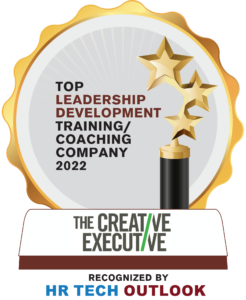“Hybridity” is here to stay. One of the best things you can do as a leader in your organization is to formalize the vision for your hybrid workforce that you can execute in 2022. There’s no more important battlefield than hybrid meetings—how you bring your remote and in-office people together.

Whether your organization has been intentional or you have stumbled your way through this change is moot. It’s time for the vision and strategy for this reality to catch up. We were struck by this recent McKinsey study that found that 90% of businesses have a hybrid model currently, but only 32% have a detailed vision for what this looks like in the everyday operation of the business.
If you aren’t sure where to start on the overall hybrid vision, we suggest starting with investing in better hybrid meetings. Here are three areas to consider.
Find New Ways to Relate
One of the most underrated gaps for a remote workforce is that we’ve lost the opportunity for small moments of relating outside of the transactional. During a traditional eight-hour, in-office workday, it would be virtually impossible not to connect with fellow team members. While your business success doesn’t hinge on whether you know the name of Deborah’s new puppy, that John is an amateur chef who enjoys his leftovers for lunch, or that Elizabeth is going through a difficult time with her aging parents, it is precisely these moments that provide the glue (trust and collaboration) for our teams and enable us to show up to our work as a whole person.
Think about how you can orchestrate these moments in the virtual space. Creativity and collaboration expert and executive leadership coach Melinda Rothouse in her new book: Syncreate: A Guide to Navigating the Creative Process for Individuals, Teams, and Communities, suggests opening meetings with a brief personal check-in before launching into “official” business. “Take a moment in the beginning for everyone to fully land with their whole selves in the meeting and connect on a personal level.” She says. “This will enrich the process and the exchange of ideas to follow.”
In one of our recent team meetings, I asked: What’s one thing that people would be surprised to learn about you? We were floored by the answers: roller derby jammer, glass artist, preacher, psychedelics expert!
Here are some other ideas:
- Tell us about a family tradition.
- Tell us a story about one your favorite meals.
- Pick a verb that describes your month/week/day
- What’s a passion/creative project are you working on?
- Show us a personal object in your workspace.
Set Expectations for Hybrid Meetings
The days of aimless meetings are over (or rather, they need to be!). Without clear direction, your meetings will run everyone ragged and get you no closer to your objectives. It’s worth setting some general expectations as part of your overall vision. Big picture considerations include whether you generally expect team members to have their video on, and the protocol for muting/unmuting, for example. When you combine remote and in-person employees in the same hybrid meeting, it’s worth drawing a picture of how you’d like the two spaces to interact.
Your overall strategy for hybrid meetings should also flesh out how much face time you’d like to have with your individual team members versus the team as a whole. You want to have a good balance so that people have time to collaborate and also be heard, while also providing time for deep work outside of the meeting environment.
Meeting-specific expectation-setting can include sending a clear agenda (start/finish on time and stick to your agenda) and laying out your goals for the meeting (who are the key stakeholders in the conversation and how you’d like people to contribute). It’s helpful to designate a meeting facilitator to keep time and steer the conversation back to the purpose if it goes off track. Finally, make sure to explain what you expect at the culmination of the meeting. Leave time in your agenda to discuss clear actions, who is taking point, and ensure everyone is on the same page.
For more, read my early-pandemic blog on leading virtual teams.
Be Thoughtful About Your Technology for Hybrid Meetings
By now, everyone from your grandmom to your toddler is well-versed in a host of virtual technologies. We’ll bet that most of you picked a platform early on and you continue to plod through your virtual meetings using that same technology. If it’s functioning well—i.e. helping your team come together and do great work—then, by all means, keep doing what you’re doing.
The market for hybrid meeting technologies continues to evolve to meet our personal and professional needs, so we suggest a hard look at the tools you currently use. Consider…
- Is it important for everyone to see each other?
- Do you need an annotation or collaboration tool?
- Is it crucial to record or transcribe your meetings?
- Are there limitations due to firewalls or other security considerations?
An all-virtual team might have a completely different set of needs than a team that includes a combination of virtual and in-person contributors. We recently tried out a new 360-degree meeting tool from Owl Labs with a client. After months of seeing everyone in two dimensions, we were blown away by how “in the room” and intimate it felt. We can’t underscore how important it is to research your options and be intentional when it comes to choosing your technology. An upgrade might make all the difference.
Leaders who provide structure, expectations, and a vision for this current moment will only help ease the anxiety and stress that your people feel amidst a world awash in change and uncertainty. Now is the perfect time to get intentional about your hybrid work environment going into 2022 and beyond. Your teams will thank you and you’ll reap the rewards through better quality work, happier people, and more successful outcomes.


